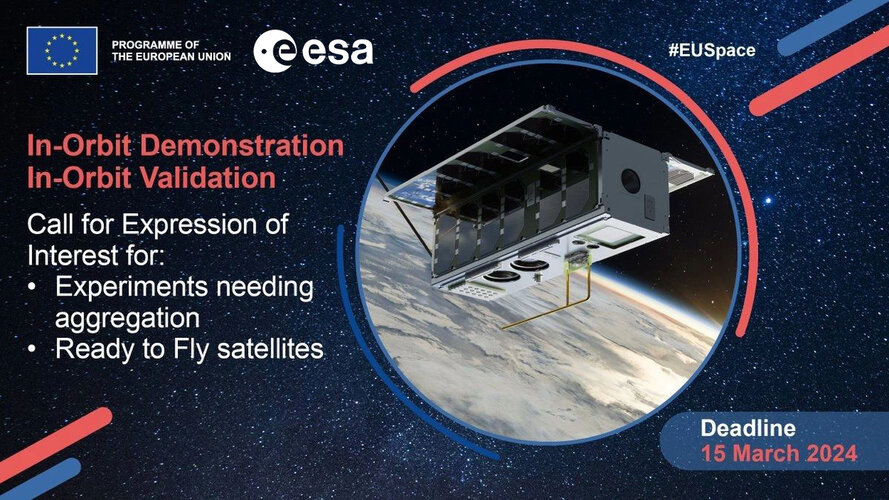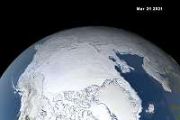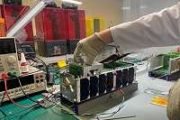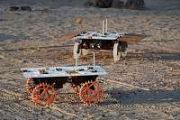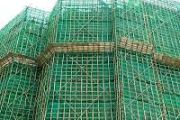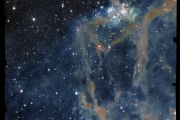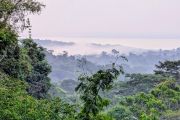
Copernical Team
Tobago oil spill
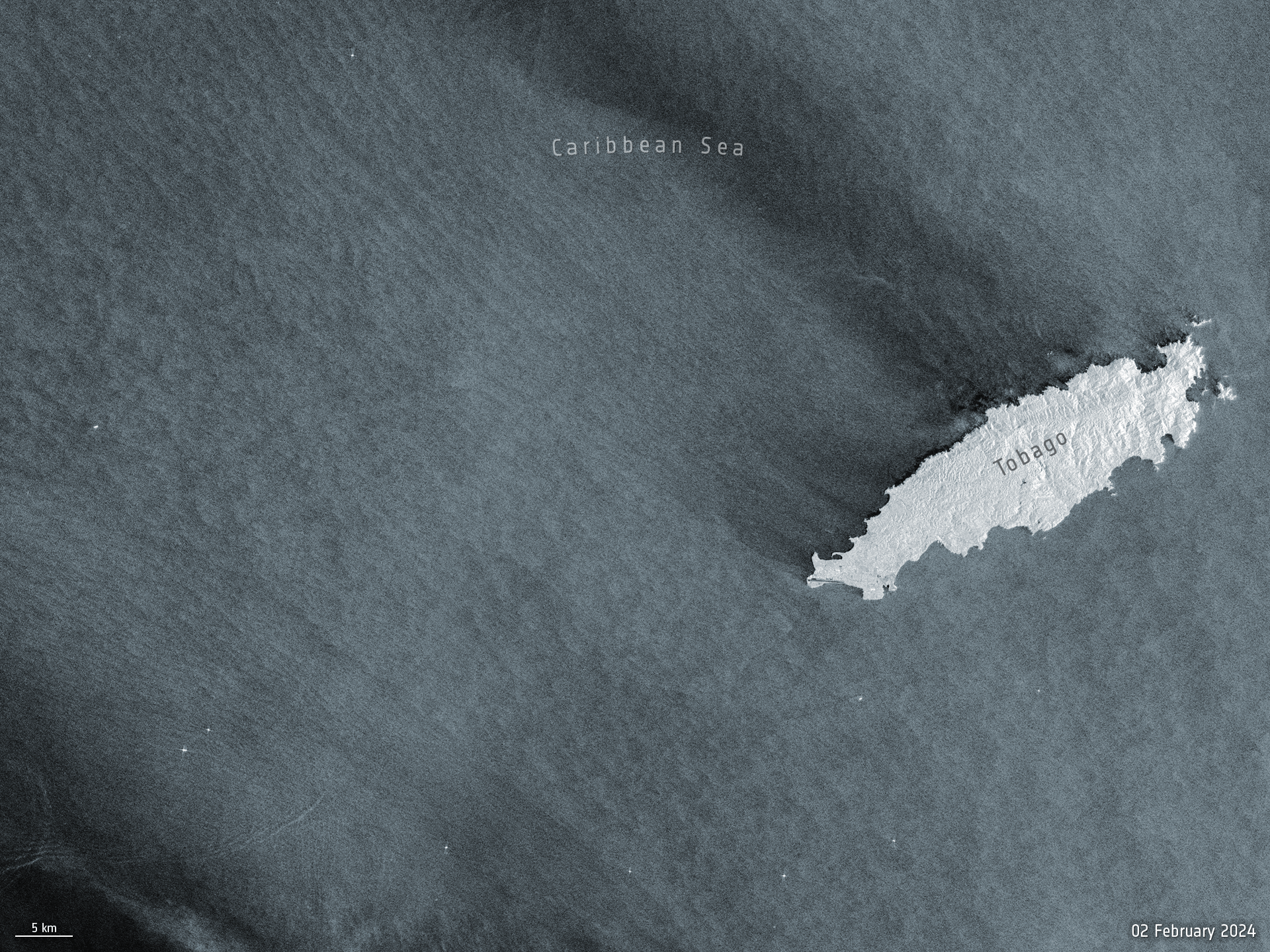 Image:
Before and after satellite images from the Copernicus Sentinel-1 mission show the scale of the oil spill that occurred off the shores of Trinidad and Tobago’s coastline earlier this week.
Image:
Before and after satellite images from the Copernicus Sentinel-1 mission show the scale of the oil spill that occurred off the shores of Trinidad and Tobago’s coastline earlier this week. Saturn's largest moon most likely non-habitable: Western study
 A study led by Western astrobiologist Catherine Neish shows the subsurface ocean of Titan - the largest moon of Saturn - is most likely a non-habitable environment, meaning any hope of finding life in the icy world is dead in the water.
This discovery means it is far less likely that space scientists and astronauts will ever find life in the outer solar system, home to the four 'giant' pla
A study led by Western astrobiologist Catherine Neish shows the subsurface ocean of Titan - the largest moon of Saturn - is most likely a non-habitable environment, meaning any hope of finding life in the icy world is dead in the water.
This discovery means it is far less likely that space scientists and astronauts will ever find life in the outer solar system, home to the four 'giant' pla Cathedral termite mounds inspire UArizona-designed lunar structures
 NASA has big plans for its Artemis program - to return Americans to the moon for the first time since 1972 and establish a lunar base for humans by the end of the decade. With NASA funding, a team of University of Arizona engineers is using robot networks to create termite-inspired structures that will help astronauts survive the moon's harsh environment.
Associate professor Jekan Thanga a
NASA has big plans for its Artemis program - to return Americans to the moon for the first time since 1972 and establish a lunar base for humans by the end of the decade. With NASA funding, a team of University of Arizona engineers is using robot networks to create termite-inspired structures that will help astronauts survive the moon's harsh environment.
Associate professor Jekan Thanga a Fun Math and a New Butte: Sols 4096-4097
 One side effect of enjoying a very long mission is reaching fun number milestones. Usually that is "Sol 3000" or some other nice round number, but today we are planning the mathematically fun sol 2^12, also known as sol 4096.
Today I was on shift as a MAHLI uplink lead, so I was excited to think about contact science targets. Unfortunately, the team determined that Curiosity's wheels are p
One side effect of enjoying a very long mission is reaching fun number milestones. Usually that is "Sol 3000" or some other nice round number, but today we are planning the mathematically fun sol 2^12, also known as sol 4096.
Today I was on shift as a MAHLI uplink lead, so I was excited to think about contact science targets. Unfortunately, the team determined that Curiosity's wheels are p SpaceX launches batch of satellites for Space Systems Command
ASIA-AQ Mission: A Multidimensional Approach to Understanding Air Pollution
 In a significant stride toward enhancing global air quality understanding, NASA has embarked on a collaborative mission with Korea's National Institute of Environmental Research (NIER) and other international partners. The initiative, known as the Airborne and Satellite Investigation of Asian Air Quality (ASIA-AQ), aims to collect and analyze atmospheric data across several Asian locations. This
In a significant stride toward enhancing global air quality understanding, NASA has embarked on a collaborative mission with Korea's National Institute of Environmental Research (NIER) and other international partners. The initiative, known as the Airborne and Satellite Investigation of Asian Air Quality (ASIA-AQ), aims to collect and analyze atmospheric data across several Asian locations. This DARPA Launches BLUE Program to Power Ocean Sensors with Marine Biomass
 In a groundbreaking initiative that could redefine how marine sensors are powered, the Defense Advanced Research Projects Agency (DARPA) has introduced the BioLogical Underwater Energy (BLUE) program. This ambitious project explores the potential of marine biomass-ranging from dissolved organic matter and phytoplankton to zooplankton and even microplastics-as a sustainable energy source for ocea
In a groundbreaking initiative that could redefine how marine sensors are powered, the Defense Advanced Research Projects Agency (DARPA) has introduced the BioLogical Underwater Energy (BLUE) program. This ambitious project explores the potential of marine biomass-ranging from dissolved organic matter and phytoplankton to zooplankton and even microplastics-as a sustainable energy source for ocea L3Harris Technologies Launches New Satellites to Enhance US Missile Defense
TelePIX Launches TetraPLEX: The Next-Gen AI Processor Elevating Satellite Data Analysis
 In a significant stride for satellite technology, TelePIX, a South Korean space startup, has unveiled the TetraPLEX, a high-performance AI processor that promises to revolutionize the handling and analysis of satellite data. This processor, developed in collaboration with tech giant NVIDIA, boasts a groundbreaking 10 trillion operations per second, positioning it as a cornerstone for advanced in
In a significant stride for satellite technology, TelePIX, a South Korean space startup, has unveiled the TetraPLEX, a high-performance AI processor that promises to revolutionize the handling and analysis of satellite data. This processor, developed in collaboration with tech giant NVIDIA, boasts a groundbreaking 10 trillion operations per second, positioning it as a cornerstone for advanced in 
